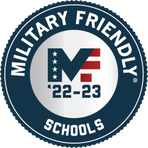Learn to be a Automotive Engine/Cylinder Head Machinist
The objective of Automotive Engine/Cylinder Head Machining is to qualify the student as an automotive cylinder head machinist. The theory of operation and the cylinder head role in the engine operation will be thoroughly covered. Air flow characteristics and their effect on performance and longevity will be highlighted in all courses of this program.
One semester credit hour for each fifteen (15) hours of classroom contact plus appropriate outside preparation or the equivalent: or one semester credit hour for each thirty (30) hours of laboratory work plus appropriate outside preparation: or one semester credit hour for not fewer than forty-five (45) hours of shop instruction (contact hours) or the equivalent.
Single subjects making up this program are not offered individually. See the Equipment List Addendum for a complete list of machines used in the Automotive Engine/Cylinder Head Machining program.
The student will gain a general introduction to the industry work environment including customer relations, work orders, build sheets, and cylinder head parts acquisition. The student will be introduced to the use of precision measurement and the required specialized, as well as basic hand tools. Special emphasis is placed on personal and shop safety due to the nature of potentially hazardous equipment. Outside-the-classroom work is required. This course includes an average of 7.5 hours of outside the classroom work.
The student will learn procedures of careful inspection and precise measurement technologies, combined with the proper applications, formulas, and machinist math to provide a solid basis for successful production and high performance cylinder head assembly procedures. Outside-the-
classroom work is required. This course includes an average of 15 hours of outside the classroom work.
The student will learn the basic theory and concepts of internal combustion engine operation. The course then moves into more specific and complex areas including torque, airflow, volumetric efficiency, operating cycles, and horsepower. Outside-the-classroom work is required. This course includes an average of 8.75 hours of outside the classroom work.
The student will learn the how and why of the many components of cylinder head assembly and their relationship to each other. The function and various material compositions of cylinder head castings and components will also be covered. Standard and high performance differences will be discussed. Outside-the-classroom work is required. This course includes an average of 7.5 hours of outside the classroom work.
The student will learn the proper procedure of head disassembly and careful inspection to determine any causes of failure, repair needs, and component replacement. Cleaning methods, crack detection, repair, and associated environmental issues, for both aluminum and iron heads, will also be discussed. Outside-the-classroom work is required. This course includes an average of 15 hours of outside the classroom work.
The student learns the set-up and operation procedures of machining equipment. The student will also learn the procedures used to complete the machining of cylinder heads and component parts. A discussion of high performance and production differences will complete this section.
Outside-the-classroom work is required. This course includes an average of 15 hours of outside the classroom work.
Actual hands-on cylinder head and component machining will be accomplished by each student as they become proficient with all machining operations. Machined components will be checked closely for accuracy. These pieces will become part of each student’s course project. Outside-the-classroom work is required. This course includes an average of 48.75 hours of outside the classroom work.
The student is exposed to the art of creating maximum efficiency and horsepower through precision component assembly relationships. Combustion chamber sizing and compression ratios will be discussed. The student will also study cylinder head performance secrets. Outside-the-classroom work is required. This course includes an average of 11.25 hours of outside the classroom work.
The student will learn how to assemble the precisely machined components into a complete cylinder head. This is covered in detail. Evaluation and testing of complete assemblies will reveal the relationship of changes to performance. Outside-the-classroom work is required. This course includes an average of 22.5 hours of outside the classroom work.
The student will explore flow characteristics of various head designs and the resultant effects of change. Proper porting technique, when it should be used, and how it should be used, is covered. The actual hands-on experience will illustrate methods and levels of airflow improvement.
Outside-the-classroom work is required. This course includes an average of 26.25 hours of outside the classroom work
The student is prepared to enter the work force by learning the importance of personal appearance, conduct, attitude, and mechanical aptitude. Job search techniques, the application process, effective resume composition, and interviewing skills are covered. Career goal setting, steps toward self-employment, and job placement assistance is covered. Outside-the-classroom work is required. This course includes an average of 3.75 hours of outside the classroom work.




